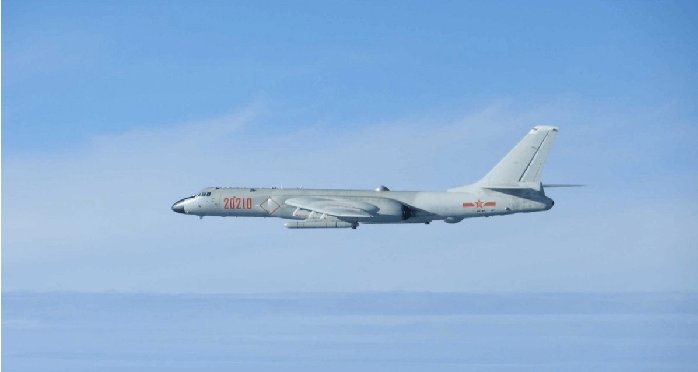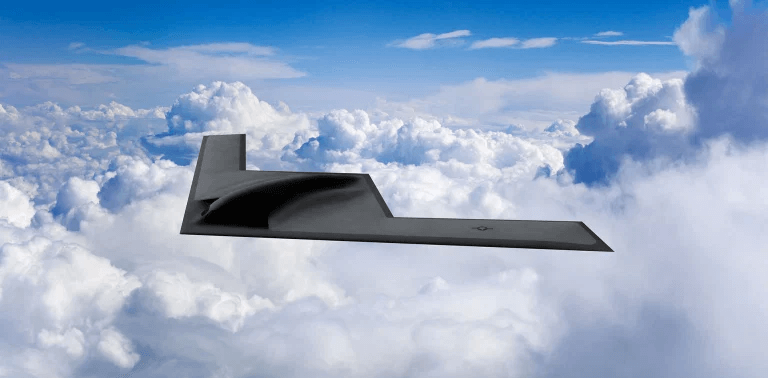Strategic nuclear bombers can be stupendous instruments of power projection and an essential part of the nuclear triad to deter and defeat any adversary.
Currently, only three nations — the US, Russia, and China — fly bombers. India, the fourth largest air force in the world, is out of this league.
There has been much debate on whether India should equip its air force with this ultimate airpower asset, but the experts differ in their views.
The bombers can penetrate enemy air defenses and carry nuclear weapons. Their long-range capability and immense striking power, despite the heavy weapons load they carry, give the countries possessing them an option to strike “anytime, anywhere.”
The addition of a strategic bomber, which can fly into the enemy territory and deliver large amounts of munitions to destroy military installations, logistics establishments, or even entire cities, can truly complete India’s nuclear triad, offering exceptional deterrence from its two nuclear-armed neighbors.
While this aircraft is not needed on the Pakistan front, the threat from China is increasing, with the country about to induct its newest and most powerful bomber, the H-20.
The upcoming H-20 will truly make China an intercontinental power, claims the South China Morning Post, which describes the bomber as being a heavy and stealthy plane, capable of flying across the Pacific with a 45-ton weapons payload. That claim is, however, refuted by critics, who say such range and carrying capability will significantly increase the aircraft’s size.
The SCMP quotes sources in China as saying the bomber will have a range of at least 12,000 kilometers, which would even put Hawaii within its reach. If the plane took the Arctic route from China, then the entire United States would be within its striking distance.

Much to the consternation of military observers in India, China’s newest bomber will give the country a formidable nuclear strike capability far deeper into enemy territories.
However, the experts say the modern fighter aircraft have the ability to carry out strategic bombings, and the primary delivery aircraft need not be a bomber necessarily. They argue that India already has the Su-30 MKI, Mirage-2000, Jaguar and the Rafale fighters with the capability of strategic nuclear delivery.
The current H-6 bombers possessed by China are known to be vulnerable to both ground and airborne targets because of their large radar cross-section. However, the EW system aboard the H-6 has the capability to blind the radars, a challenge that the Indian military experts feel can be countered by shooting down the bomber with both ground-based and airborne platforms.
Does India Need Strategic Bombers?
So, does India need a strategic bomber capability? If one considers nuclear deterrence against China, India can’t match their numbers in strategic bombers and missiles, which would take at least a decade or two. Speaking of conventional strategic bombing, India will need a staggering number of such aircraft, considering the vastness of the Chinese territory, says Group Captain A.K. Sachdev (retd).
“However, given the fact that Chinese bombers can reach Indian cities, airports and military installations, the desirability of having strategic bombers capable of holding a similar threat for at least a proportion of Chinese target systems is undebatable,” he adds.

And there is very little optimism about India being able to produce a strategic bomber even if it wanted to, considering the country spent enormous amounts of money on a fighter aircraft, which took three decades to build, and still couldn’t deliver the efficiency that was promised.
Going for a bigger aircraft, with sophisticated and complex combat requirements, would, therefore, take decades to materialize.
Let’s not forget the elephant in the room – the cost of building a strategic bomber, which is exorbitant, even from the standards of the United States, which has witnessed severe opposition to bomber programs.
The total production cost involved with the development of the US’s latest bomber is estimated to be around $100 billion, which is one of the reasons only a handful of countries operate and build them.
The US has witnessed continued erosion of its bomber force since the Cold War, when it had a total of 400 such aircraft, a number now reduced to just 157. That does not, however, mean that the era of bombers is almost over. The strategic bombers continue to be the most important instruments of power projection in the US arsenal.
The country continues to deploy them in the Middle East and other Asian countries of concern in a show of power. The B-52s were deployed for the airstrikes against ISIS in Qatar destroying their weapons storage facilities and other installations.
Last week, B-52 bombers were flown over the Middle-East to send a message to Iran amid tensions between the two countries. This marked the fourth-such bomber deployment into the region this year, proving how such aircraft continue to be the potent instruments of deterrence in the hands of major powers. The US is developing the B-21 Raider as the future of its Air Force bomber fleet, which is a modified version of the B-52 Stratofortress.
“A bomber can help India take the war deeper into enemy territory. It can be a bigger deterrent. Whether India’s fighter-bombers, surface-to-surface missiles, and cruise missiles can stand in for bombers remains a moot question. If it were true, then the major powers need not develop bombers,” argues Air Marshal Anil Chopra (retired).
And since both India and China are large countries, it may be of interest for India to have a bomber of its own, he says, adding that they will be a great asset for dominance of the Indian Ocean Region.
Chopra believes that the Chinese bombers will remain a real threat to India in the future. India, he says, can develop bombers that as a platform can combine more roles for now.
“India will have to consider acquiring some strategic bombing assets, at least 20 of them, in the next decade. It is time to take a call,” he concludes.
Although such aircraft packs a punch when it comes to delivering decisive victories in war, India has a long way to go before it can acquire or build its own bombers. Packing both electronic warfare elements and nuclear offensive capabilities, bombers will be significant force multipliers in the Indian arsenal.
Follow EurAsian Times on Google News




